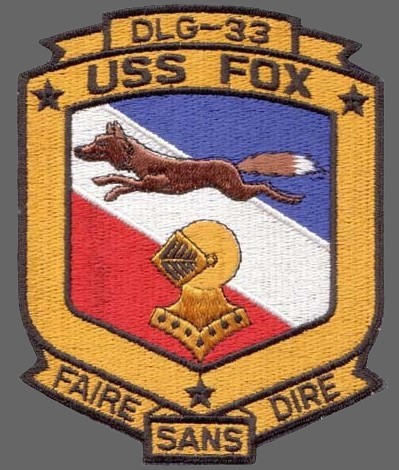
 |
|
Welcome Aboard
USS Fox (DLG/CG-33) |
 |
GUSTAVUS VASA FOX |
Born in Saugus, Massachusetts on 13 June 1821, Gustavus
Fox entered the Navy as a midshipman in 1838. He served in
cruising warships, including Commodore Perry's squadron
during the Mexican War, the Coast Survey and finally com-
manded U.S. Mail steamers plying the Atlantic coastal routes.
Resigning from the Navy in 1856, he entered business in
Lowell, Massachusetts.
At the onset of the Civil War, he volunteered for service and
received a temporary appointment as a Lieutenant in the Navy.
In April 1861 , he was dispatched in the steamer Baltic to relieve
Fort Sumter; before he could land his embarked troops, the
Confederate bombardment began and, after the surrender of the
fort, he could only transport the remanents of Major Anderson's
command back to New York.
He was appointed Chief Clerk of the Navy Department in May
1861 and at President Lincoln's insistence, the office of Assis-
tant Secretary of the Navy was created for him by congressional
action in August of the same year. Fox was a forceful, outspoken
individual with considerable experience in ocean going steam-
ships and he soon gained Lincoln's confidence. By sheer force
of personality, he rose to a dominant position in the direction
of naval affairs within the Department, similarly, his influence
in government circles afforded him a major role in the tactical
as well as strategic direction of the naval aspects of the Union
War effort.
Fox resigned from his position. in 1866 to represent the
President on a special mission to Russia. He then returned to
business in Lowell, Massachusetts, residing there until his death
on 29 October 1883.
USS FOX (DLG-33) |
|
USS FOX (DLG-33) is the third ship of the U.S. Na''''Y to be
named after President Lincoln's Assistant Secretary of the Navy.
She is the first of a new class of guided missile firgates to be
commissioned in the Pacific.
The Fox is 547 feet long, 55 feet wide, displaces almost 8,000
tons and is capable of speeds in excess of 30 knots.
From the keel which was laid in the Todd Shipyard Corporation,
San Pedro, California, on January 15, 1963, rose a massive and
majestic ship which now streches 54,7 feet in length and 55
feet in width. Fully loaded the FOX displaces nearly 8,000 tons
and her extremely high pressure steam turbines are capable of
speeding this "new breed" of frigates along in excess of 30 knots.
The FOX is designed to escort and protect fast carrier striking
forces from air, surface, and sub-surface threats. To accomplish
this vital mission the FOX has been outfitted with the latest
developments in air search, fire control radar, sonar and
digital data control systems to detect the enrny and the most
advanced anti-aircraft and anti-submarine missiles with which
to destroy him.
The dual purpose launcher, located forward on the ship is
capable of firing both the anti-air TERRIER missile and the
anti-submarine ASROC missile. The TERRIER missile is a
surface-to-air, supersonic, solid propellant, beam riding missile.
This means that when the ship's radar sensors locate the enemy,
the missile will follow the radar beam to the target. The ASROC
missile is a long range, stand off weapon which delivers either
a rocket thrown torpedo or depth charge to the enemy lurking
beneath the sea.
Amidships you will find 3"/50 battery guns and their
associated director systems which provide additional anti-air,
anti-surface and shore bombardment capability. Two triple
tube torpedo launchers, also located amidships, supplement the
ASROC in providing a tremendous submarine Killing potential.
Farther aft, are found complete facilities for handling, launch-
ing and recovering manned and drone helicopters. Beneath the
helicopter flight deck are two additional torpedo tubes which
provide still more anti-submarine warfare capability. On the
fantail is located a 5"/54 gun mount to increase still more the
anti-air, surface, and shore bombardment potential of the FOX.
To maximize the potential of her offensive capabilities, the FOX
has a completely integrated control system built around the
Naval Tactical Data Systems. This installation utilizes digital
computer systems and high speed data transmission means to
exchange information between ships and aircraft of a widly dis-
persed naval task force to facilitate assessment of threats and to
centralize direction. Within the FOX the NTDS, as if is called,
supports the optimum employment of the ship's individual
weapons against all threats.
The 24 officers 387 men, who man the FOX, are proud to be a
part of our national defense system and to have this opportunity
to show their ship to you.
|
|
 
|